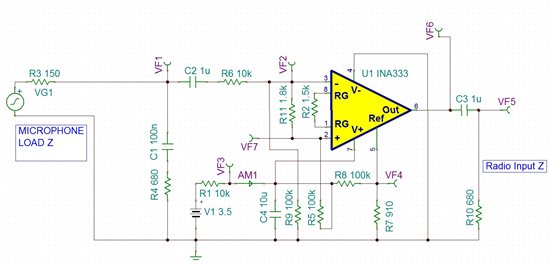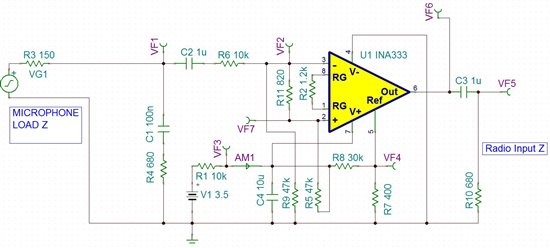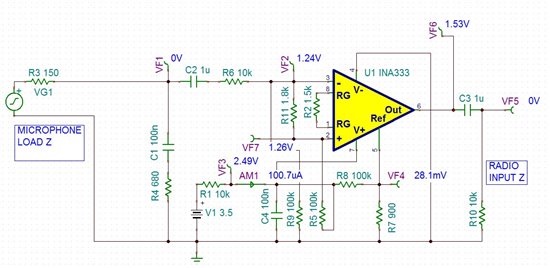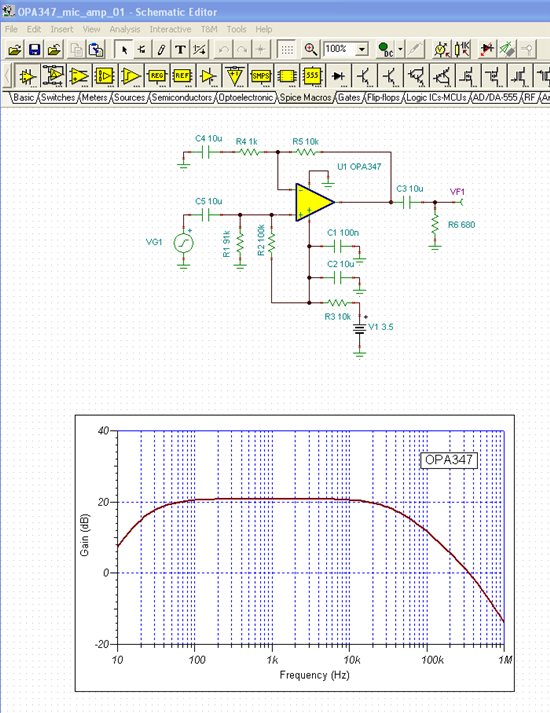I am getting no output from the INA333 when testing on a breadboard using a TINA Verified Circuit
The application is a Microphone Buffer amplifier with unbalanced Input, I have very limited power to work with (single supply between 1.8V-2.2V when the supply is pulled down by the load. I am trying to align Tina-TI simulation with the breadboard assembly.
When trying to assemble on breadboard amplifier has no output. Tina showed that the design under the power supply and load conditions should have a gain of 1.
Real world measurements were used and show that there is a difference in the operating point from Tina-TI, but the amp is still within operating range.
All real world components measure out within 1% while component tolerance in Tina is set to 5%.
Adjustments to resistor values were tried to align real world operating point to Tina predicted operating point with no success.
I have attached images with Tina Schematics. What is preventing me from getting an output on the breadboard? Can you suggest some adjustments to make it work?






